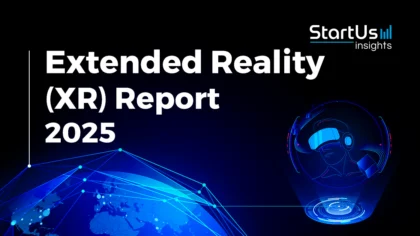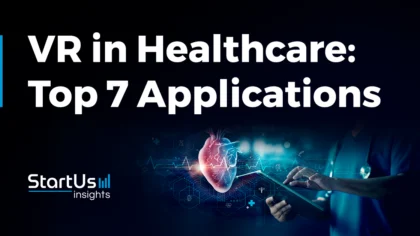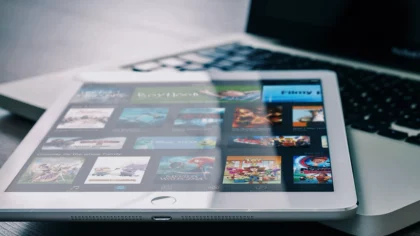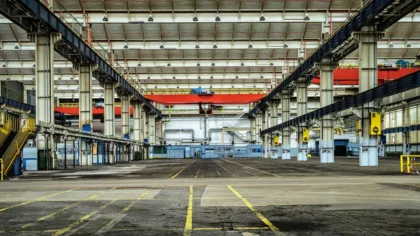In today’s fast-paced digital environment, maintaining a competitive edge demands the integration of advanced technologies that optimize operations and streamline processes. Virtual reality (VR) has emerged as a transformative tool for businesses, providing immersive solutions across critical areas such as workforce training, design prototyping, and data-driven decision-making. By incorporating VR, companies are able to enhance operational efficiency, improve real-time collaboration, and accelerate innovation cycles. This article dives into 12 highly technical applications of VR for business, showcasing how this technology is driving process optimization, reducing costs, and offering a data-centric approach to outperforming competitors in an evolving market.

Key Takeaways
- Tackling Climate Change
- Use Cases:
- Urban Flood Simulation
- Renewable Energy Optimization
- Virtual Environmental Labs
- Startup to Watch: The Climate VR
- Use Cases:
- Demographic Shifts
- Use Cases:
- Workforce Training for Aging Employees
- Remote Rehabilitation for Seniors
- Cross-Generational Learning
- Startup to Watch: SilVR Adventures
- Use Cases:
- Rapid Urbanization
- Use Cases:
- Urban Planning
- Real Estate Virtual Tours
- Architectural Design Testing
- Startup to Watch: Panoee
- Use Cases:
- The Energy Transition
- Use Cases:
- Renewable Energy Grid Integration
- Training for Energy Sector Personnel
- Real-Time Infrastructure Monitoring
- Startup to Watch: One Space
- Use Cases:
- Future of Mobility
- Use Cases:
- Autonomous Vehicle Simulation
- Urban Planning Visualization
- Traffic Management Simulators
- Startup to Watch: ProveRealities
- Use Cases:
- The Hyper-Connected World
- Use Cases:
- Remote Collaboration
- Real-Time Simulation
- Interactive Entertainment
- Startup to Watch: EventStub
- Use Cases:
- Rise of Technology & Industry 5.0
- Use Cases:
- Employee Training
- Remote Team Collaboration
- Virtual Prototyping
- Startup to Watch: Aarohin Technologies
- Use Cases:
- Shifting Economic Trends
- Use Cases:
- Affordable VR Education Platforms
- Cloud-Based VR Training Simulations
- Freemium VR Fitness Apps
- Startup to Watch: Sebela
- Use Cases:
- Innovating to Zero
- Use Cases:
- Sustainable Product Design
- Virtual Training Simulations
- Energy-Efficient Rendering
- Startup to Watch: V-Rooms
- Use Cases:
- Health and Wellness Evolution
- Use Cases:
- Exposure Therapy for Anxiety Disorders
- Mindfulness and Stress Reduction Programs
- Rehabilitation and Physical Therapy
- Startup to Watch: Motus VR
- Use Cases:
- Uncertain Geopolitical Future
- Use Cases:
- Military Training Simulations
- Strategic Planning for Multinational Corporations
- Crisis Management Exercises
- Startup to Watch: EmergiSim
- Use Cases:
- Navigating the Fracturing World
- Use Cases:
- Training Simulations
- Real-Time Data Integration
- Technique Optimization
- Startup to Watch: Finally Voyage
- Use Cases:
FAQs: How VR is Useful for Business
How can VR be used for business?
VR allows businesses to simulate real-world environments for training, product design, and collaboration. It creates immersive training modules for employees to practice tasks in safe, controlled settings. In product development, VR allows teams to visualize prototypes, perform virtual tests, and manage design processes without physical models. Additionally, VR improves collaboration by allowing virtual meetings and remote team engagement, where participants can interact with 3D models and data in real time.
What is the future of VR in business?
The future of VR in business focuses on creating more integrated and scalable solutions. As industries continue to embrace digital transformation, VR will merge with AI and cloud computing to provide greater user experiences. Businesses will adopt VR for more simulations in training to improve skills and decision-making processes. Further, industries such as manufacturing, healthcare, and logistics will rely on VR to perform operations through real-time data visualization and remote equipment monitoring.
Where is this Data from?
StartUs Insights provides data through its comprehensive Discovery Platform, which covers 4.7 million startups, scaleups, and tech companies globally, as well as 20,000 emerging technology trends. The platform excels in startup and technology scouting, trend intelligence, and patent searches, offering a detailed view of the innovation landscape. For this report, we analyzed technologies within specific industries using the trend intelligence feature. During this research, we identified patterns and trends, pinpointing relevant use cases and the startups developing solutions for each. More capabilities and details are available at StartUs Insights Discovery Platform.
Explore Top 12 Ways VR Advances Businesses [2025 & Beyond]
1. Tackling Climate Change
Virtual reality addresses climate change by predicting the weather and facilitating effective communication. VR mirrors climate scenarios for enterprises to build infrastructure and evaluate how climate change affects energy networks and crops. VR flood simulations aid in city planning and virtual laboratories offer environmental research without fieldwork requirement. Additionally, VR models make installation of solar and wind energy hassle-free, and VR collaborative spaces let teams come up with plans for quicker decision-making. In a dynamic environment, this technology better controls resources and adjusts to climate change.
3 Practical Use Cases of VR in Tackling Climate Change
- Urban Flood Simulation: VR solutions create immersive simulations of potential urban flooding scenarios. This allows city planners to design flood-resistant infrastructure to reduce damage and improve disaster preparedness.
- Renewable Energy Optimization: VR models the placement and performance of solar panels and wind turbines. Testing various configurations boosts energy efficiency and reduces resource waste.
- Virtual Environmental Labs: Researchers use VR to study environmental changes in detailed, simulated ecosystems. This allows them to test solutions and gather insights without needing physical fieldwork, thereby, saving time and resources.
Startup to Watch: The Climate VR
Climate VR is a US-based startup that addresses climate-related challenges through innovative technologies such as UAV surveys, 3D mapping, and data analysis. It employs virtual and augmented reality to understand and engage with climate issues. The company offers a range of solutions, including workshops, training, and custom prototyping for various applications like Wildfire VR and Flood VR. Additionally, it visualizes data to provide insights into environmental impacts while promoting awareness and action.
2. Navigating Demographic Shifts
VR tackles issues like shifting labor markets and aging populations. The platforms provide practical training to meet older personnel’s physical and cognitive skill upgrades. VR in healthcare eases the burden on infrastructure and offers care access to elders’ at-home therapy and rehabilitation. Additionally, VR therapy improves cognitive function and memory retention in those with cognitive impairment. VR social media sites also allow elders to stay in touch with their communities and families. In addition, these VR solutions enable customers to adjust to changing demographics by supporting cross-generational education, job training, and healthcare delivery.
3 Practical Use Cases of VR in Demographic Shifts
- Workforce Training for Aging Employees: VR creates immersive training programs tailored to the skills and needs of older workers. This allows employers to provide up-to-date training without physical strain while ensuring a skilled, productive workforce.
- Remote Rehabilitation for Seniors: VR-based therapy and rehabilitation sessions allow seniors to engage in customized care from home. This reduces the burden on healthcare systems and improves patient outcomes by making care more accessible.
- Cross-Generational Learning: VR facilitates interactive classrooms that cater to both younger and older learners. It increases engagement by offering adaptable tools for lifelong learning and bridges generational learning gaps.
Startup to Watch: SilVR Adventures
Australian-startup SilVR Adventures offers senior-focused virtual reality activities and content in a diverse collection. It encourages social gatherings in a virtual cafe, guided virtual tours, and virtual theatrical showings of great films. Care staff also personalize activities on the platform to fit the hobbies and personalities of the residents. This customization fosters meaningful connections for participants. Seniors use integrated microphones and lightweight headsets to participate in group activities and have conversations. This approach encourages elders to revisit special experiences and locations as part of recollection therapy.
3. Rapid Urbanization
Virtual reality resolves challenges in planning, traffic congestion, and environmental strain. VR platforms create immersive city models for planners to visualize and test urban scenarios. Traffic management tools simulate real-time transportation networks to analyze patterns and congestion points. Plus, VR-based systems provide architects with design ideas, evaluate energy-efficient buildings, and assess environmental impacts. Interactive design reviews also allow stakeholders to engage with urban designs which improves decision-making and efficiency.
3 Practical Use Cases of VR in Rapid Urbanization
- Urban Planning: VR allows city planners to simulate and test designs for roads, transportation, and public spaces. It improves planning efficiency by identifying issues early and reducing costly revisions.
- Real Estate Virtual Tours: Real estate companies use VR to offer immersive property tours, allowing clients to explore homes without visiting the location. This benefits the industry by shortening the sales cycle and lowering travel-related costs.
- Architectural Design Testing: Architects employ VR to visualize and interact with building models before construction. It optimizes designs, lowers the risk of construction errors, and improves sustainability.
Startup to Watch: Panoee
Panoee is a Vietnamese company that offers free virtual tour software that creates immersive 3D 360 tours for real estate, hospitality, tourism, architecture, education, museums, and art galleries. The software allows users to build detailed virtual experiences using its essential toolkit. This toolkit includes a 360 panorama and tour builder, 11 types of hotspots, and options to publish to Google Street View. Moreover, it allows designs and branding customization for virtual tours for users to tailor their presentations to their specific needs.
4. The Energy Transition
Through realistic training and simulations, virtual reality (VR) aids in the energy transition. Energy grid platforms USE virtual reality to manage and visualize the integration of renewable energy. VR-based training allows employees to practice new technologies in realistic environments without taking any physical risks. For example, Siemens uses virtual reality to teach employees about new energy systems. Virtual monitoring systems also offer real-time maintenance to boost productivity and reaction times. These virtual reality solutions offer a more easy transition to sustainable solutions by providing energy network management and training.
3 Practical Use Cases of VR in Energy Transition
- Renewable Energy Grid Integration: VR models the integration of renewable energy sources into traditional grids for accurate scenario planning and system optimization. It allows stakeholders to understand and mitigate potential integration issues, leading to more efficient and stable energy distribution.
- Training for Energy Sector Personnel: VR provides realistic training environments for personnel working with new energy technologies. This increases the workforce’s readiness and proficiency in managing energy systems.
- Real-Time Infrastructure Monitoring: VR facilitates the virtual monitoring of energy infrastructures for the assessment of performance and immediate identification of maintenance needs. It improves response times and minimizes downtime by providing detailed, interactive simulations of energy assets.
Startup to Watch: One Space
One Space VR is a US-based startup that provides remote VR training for the wind energy industry. Users gain procedural knowledge in safety and risk management through solo or team-based simulations. The platform uses hand tracking and a self-hosted multiplayer server for realistic interactions. It encourages wind farm operators to invest in VR headsets and schedule team training, reducing labor, travel, and accommodation costs. The platform also features exam modes for knowledge validation, performance tracking with data analytics, and company-specific scenarios. Both GWO-licensed and non-licensed training providers use the platform for BST and BTT modules to allow virtual trainer-trainee interactions.
5. Future of Mobility
Autonomous vehicle simulations create realistic environments for testing technologies in complex traffic and weather conditions. VR tools aid in visualizing and assessing new transportation infrastructures in virtual settings. Companies like CityFormLabs and Enodo Insights use VR to model the impact of infrastructure on urban landscapes. This technology reduces the need for physical prototypes and real-world tests. Further, VR’s precision modeling supports efficient, data-driven approaches to transportation and urban growth.
3 Practical Use Cases of VR in the Future of Mobility
- Autonomous Vehicle Simulation: VR platforms simulate real-world driving conditions to test and refine autonomous vehicle technologies. This approach accelerates development, improves safety, and reduces the need for physical prototypes.
- Urban Planning Visualization: VR tools create interactive models of new transportation infrastructures, allowing planners to visualize and assess their impact on urban environments. This improves decision-making and stakeholder engagement by providing a clear view of proposed changes.
- Traffic Management Simulators: VR-based simulators model and test various traffic management strategies in a virtual environment. This optimizes traffic flow and reduces congestion by allowing engineers to experiment with scenarios without real-world trials.
Startup to Watch: ProveRealities
ProveRealities is a German startup that develops the IPR SeatBuck, an electromechanical device that adjusts to desired vehicle positions through tablet input. It also integrates with VR headset visualization. This technology simulates various vehicle interiors, from sports cars to vans. It automatically repositions components such as the steering wheel, seat, armrests, and pedals to configurable settings. Additionally, it transfers the positions and rotations of these elements into the VR scene for an immersive design experience. By augmenting the design process with VR, the company brings efficiency to vehicle interior simulations while integrating VR into IT and CGI systems. It also delivers ready-to-use IPR VR installations that support the future of mobility.
6. The Hyper-Connected World
The hyper-connected world combines VR with high-speed networks and cloud computing to create real-time immersive environments. 5G improves data transmission speeds and reduces latency. Edge computing processes data closer to the source while minimizing delays. WebRTC protocols enable real-time communication in VR. Cloud-based rendering improves performance by distributing graphical processing tasks. This technology reduces latency and brings synchronization in virtual spaces. Additionally, the connectivity supports scalability through VR applications to adapt to growing user demands without compromising performance.
3 Practical Use Cases of VR in the Hyper-Connected World
- Remote Collaboration: The use of VR platforms for remote collaboration allows teams to work together in a shared virtual space regardless of their physical location. This approach increases productivity by providing a more immersive and interactive environment for team meetings and project management.
- Real-Time Simulation: VR simulations support real-time updates across connected environments, improving training and testing scenarios. This capability allows users to experience dynamic changes and interact with evolving simulations that increase preparedness and decision-making skills.
- Interactive Entertainment: Hyper-connected VR platforms deliver rich, interactive entertainment experiences by integrating multiple digital worlds and user inputs. This integration offers users a more engaging and cohesive experience in gaming and virtual events.
Startup to Watch: EventStub
Indian startup EventStub delivers a 3D virtual events platform. It simplifies the online event planning process by managing all logistical details for users to focus on content and engagement. This platform allows live broadcasting, which provides audiences the flexibility to join events from any location through multiple streaming services. Additionally, a dedicated support team offers on-demand assistance to ensure a smooth experience.
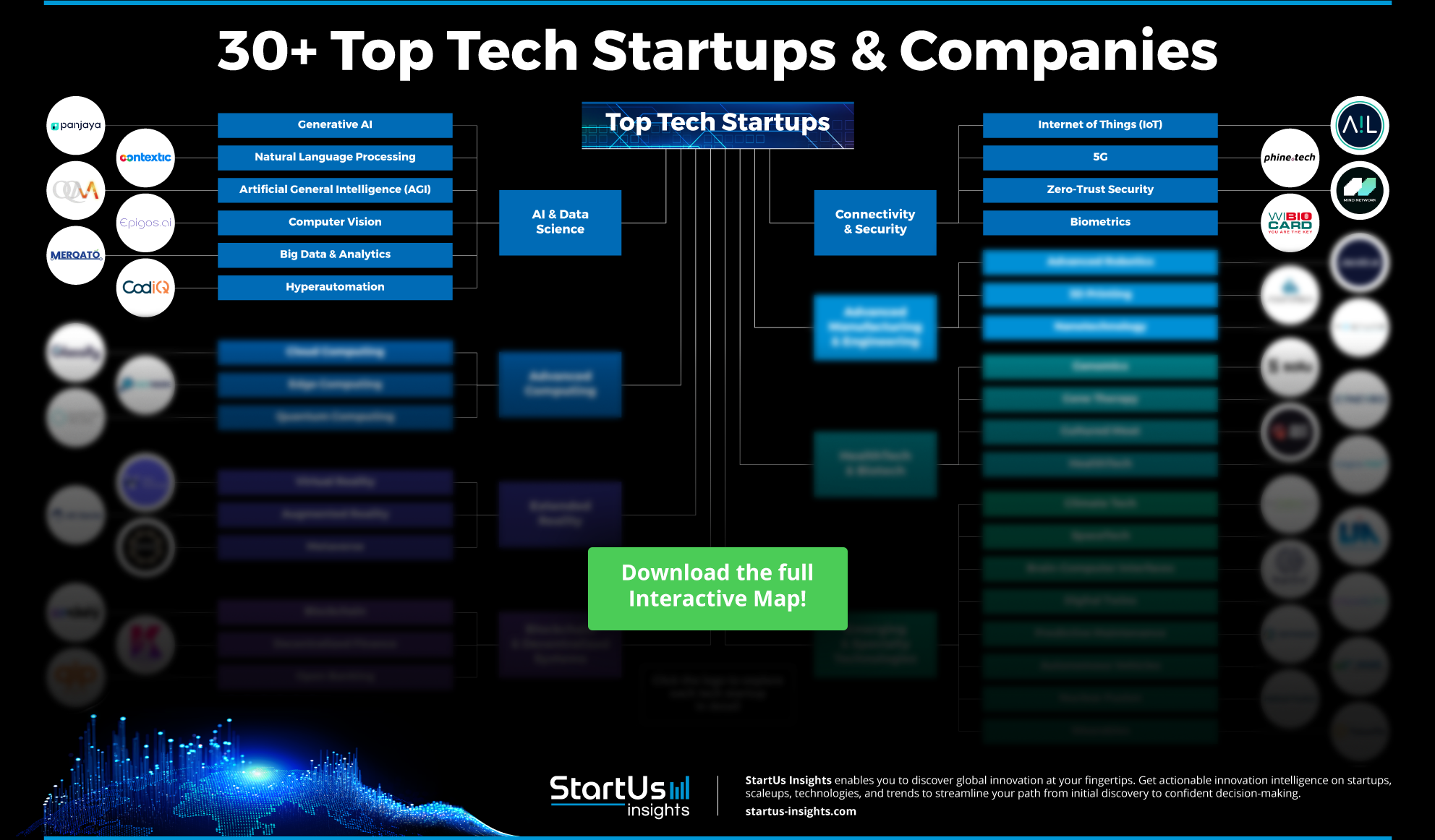
7. Rise of Technology & Industry 5.0
High-resolution VR headsets provide immersive, cost-effective alternatives for realistic simulations without physical prototypes. VR platforms offer real-time virtual meetings for remote collaboration and teamwork. Additionally, VR develops product cycles by supporting rapid prototyping and iterative design. By tackling these issues, VR technology brings synergy between human creativity and technological development.
3 Practical Use Cases of VR in Industry 5.0
- Employee Training: VR simulations provide a realistic training environment for employees to master complex tasks without real-world risks. This approach reduces training costs and improves skill retention by offering hands-on experience in a controlled, immersive setting.
- Remote Team Collaboration: VR platforms allow geographically dispersed teams to work together in a shared virtual workspace. This integration boosts productivity by creating a collaboration experience, despite physical distance.
- Virtual Prototyping: Companies use VR for designing and testing product prototypes in a virtual environment for rapid adjustments and iterations. This method shortens development cycles and reduces the need for physical prototypes, thus, accelerating time-to-market.
Startup to Watch: Aarohin Technologies
Aarohin Technologies is an Indian company that provides electronic system solutions that focus on virtual prototyping and design automation. The company allows users to simulate real devices on their computers through its virtual prototype technology. This solution employs C++ and SystemC for modeling and analysis. Additionally, the company offers training programs that equip individuals with the skills necessary to excel in hardware design.
8. Navigating the Shift in Global Economic Power
The virtual reality industry faces challenges from rising production costs, increasing competition, and the need for flexible solutions. Companies like Oculus (Meta) and HTC develop cost-effective VR headsets to lower production expenses. Integrating cloud-based computing offloads intensive tasks and reduces the need for high-end hardware. Additionally, compression algorithms minimize data bandwidth requirements while delivering quality experiences at affordable rates. These solutions alleviate financial pressures and support the industry’s growth and sustainability.
3 Practical Use Cases of VR in Shifting Economic Power
- Affordable Education Platforms: Affordable VR headsets are now used in educational settings to provide immersive learning experiences. By lowering the cost barrier, these platforms make educational tools accessible to a wider range of schools and students.
- Cloud-Based Training Simulations: Cloud-based VR systems offer scalable training solutions for industries like healthcare and manufacturing. This approach reduces the need for expensive local hardware and allows organizations to deliver high-quality training programs efficiently.
- Freemium Fitness Apps: Freemium VR fitness apps allow users to access basic workouts for free, with premium features available through subscription. This model attracts many users and generates steady revenue from those who pay for premium features and personalized experiences.
Startup to Watch: Sebela
US-based startup Sebela delivers high-quality virtual try-ons for e-commerce makeup brands. It employs technology to provide realistic makeup simulations for a virtual experience that closely matches real-life applications. This approach allows brands to improve customer engagement and increase sales. Clients report sales boosts of over 150% following the implementation of Sebela’s virtual try-ons. Additionally, the company’s color-matching process offers precise product shade identification for integration without affecting website loading speed.
9. Innovating to Zero
By addressing waste generation from traditional hardware manufacture, virtual reality (VR) innovates to zero. VR in business is tackling this problem through energy-efficient manufacturing techniques and recyclable materials. The large carbon impact of physical testing and training presents another difficulty. Virtual reality solutions provide surroundings that take the place of physical setups, saving resources and cutting emissions. Virtual reality systems further facilitate power-saving rendering methods. For instance, businesses like Varjo employ virtual reality hardware to produce high-fidelity simulations that save waste and do away with large-scale physical prototypes. Virtual reality-based training programs also lessen the need for travel and the corresponding carbon emissions. These VR technologies optimize resource usage across different applications and offer sustainable alternatives.
3 Practical Use Cases of VR in Innovating to Zero
- Sustainable Product Design: VR allows designers to create and test product prototypes in virtual environments to minimize the need for physical models. This approach reduces material waste and accelerates the development process while reducing resource consumption.
- Virtual Training Simulations: VR provides immersive training experiences without physical equipment or travel. Remote training sessions lower carbon emissions associated with travel and conserve resources needed for in-person setups.
- Energy-Efficient Rendering: VR platforms use energy-efficient rendering techniques to produce high-quality visuals while consuming less power. This technology reduces the energy footprint of VR applications and supports more sustainable practices in digital content creation.
Startup to Watch: V-Rooms
V-Rooms is a Belgium-based company that provides solutions for complex construction projects through its dedicated, collaborative, and immersive digital rooms. It offers an all-in-one platform that improves online collaboration. This platform integrates expert services for project teams to communicate and work together effectively. The plug-and-play nature of the platform eliminates the need for extensive training or software installation. It also does not require specialized VR hardware that makes it accessible to all users. Additionally, the company supports hybrid working by reducing air traffic and cutting costs, thereby promoting sustainability.
10. Health and Wellness Evolution
The health and wellness industry faces challenges like limited access to effective therapy, the need for personalized care, and low engagement in traditional methods. VR provides immersive experiences and precise data for tailored treatments. For example, Limbix offers VR-based exposure therapy for managing anxiety and PTSD in controlled environments. VR platforms also integrate mindfulness practices for stress reduction and clarity. Solutions like P360 use interactive exercises for physical rehabilitation to boost patient engagement and progress tracking. Also, VR therapy treats phobias with real-time adaptive simulations that make care more accessible, engaging, and personalized.
3 Practical Use Cases of VR in Health and Wellness Evolution
- Exposure Therapy for Anxiety Disorders: Exposure Therapy involves VR simulations for patients to confront and manage their fears in a controlled environment. It benefits by providing effective treatment options and overcoming barriers related to accessibility.
- Mindfulness and Stress Reduction Programs: The VR experiences create immersive environments for meditation and relaxation. They offer a customizable and engaging approach to mindfulness practice.
- Rehabilitation and Physical Therapy: VR platforms aid physical rehabilitation through interactive exercises and simulations tailored to individual needs. They benefit by improving patient engagement and tracking progress more accurately compared to traditional methods.
Startup to Watch: Motus VR
UK-based startup Motus VR delivers virtual reality therapeutics for care settings. It uses immersive technology to engage patients in personalized experiences. These activities stimulate discussions about past and future life events, personal preferences, and significant memories. This approach allows healthcare providers to gain deeper insights into patients’ lives. It fosters more meaningful interactions and improves care personalization. The technology improves physical vitality, emotional well-being, and cognitive engagement. It also reduces isolation and restores mobility in deconditioned individuals.
11. Uncertain Geopolitical Future
Virtual reality resolves key challenges such as security risks, trade disruptions, and strategic instability in an uncertain geopolitical future. VR simulations allow military and defense sectors to prepare for various scenarios. 3D modeling and interactive simulations assist companies in assessing potential trade disruptions and supply chain impacts. VR also supports crisis management exercises that allow organizations to test response strategies for international crises. Further, these VR solutions manage the complexities and uncertainties of the geopolitical landscape.
3 Practical Use Cases of VR in Uncertain Geopolitical Future
- Military Training Simulations: VR platforms create immersive environments for military personnel to practice and respond to various geopolitical scenarios. This approach increases preparedness and decision-making skills under uncertain conditions.
- Strategic Planning for Multinational Corporations: Companies use VR to model and evaluate the impact of geopolitical shifts on global supply chains and operations. This allows more accurate forecasting and risk management.
- Crisis Management Exercises: VR allows organizations to simulate responses to international crises, such as conflicts or trade disruptions. This refines response strategies and improves coordination among stakeholders.
Startup to Watch: EmergiSim
Australian startup EmergiSim offers virtual reality training solutions for first responders, including police, fire, ambulance, and military teams. Its technology creates immersive training scenarios that simulate trauma events and high-pressure environments. This allows responders to practice situational awareness and response skills. By combining VR with expertise in emergency response, EmergiSim delivers tailored scenarios specific to each team’s tools and procedures. This approach reduces logistical challenges and training costs. It also enables teams to achieve critical learning outcomes to improve their readiness for uncertain geopolitical futures.
12. Navigating the Fracturing World
VR platforms allow geologists and engineers to visualize fracture networks in rock formations. This approach addresses the challenge of understanding complex subsurface conditions. Immersive VR training programs create safe environments for field workers and engineers. Additionally, VR integrates real-time data from fracture monitoring systems. This provides a 3D view of subsurface conditions and simplifies data interpretation. Further, VR tools facilitate virtual testing of various fracturing techniques and equipment setups. These tools minimize trial and error in physical settings. These applications also improve safety, efficiency, and precision in fracture management.
3 Practical Use Cases of VR in the Fracturing World
- Training Simulations: VR platforms provide immersive environments for training geologists and engineers in fracture stimulation and monitoring techniques. This reduces the risk associated with hands-on training and accelerates skill development by replicating complex scenarios safely.
- Real-Time Data Integration: VR solutions integrate real-time data from fracture monitoring systems to create 3D visualizations of subsurface conditions. This integration ensures the accuracy of data interpretation and improves decision-making by providing a clear, dynamic view of geological changes.
- Technique Optimization: VR tools allow for virtual testing and optimization of different fracturing techniques and equipment setups. This minimizes the need for costly and time-consuming physical trials.
Startup to Watch: Finally Voyage
Finally Voyage is a US-based company that provides a mobile app for virtual tours. Locals are the hosts of this app that encourages users to explore new places and cultures from the comfort of their homes. Through the app, visitors enjoy travel experiences by connecting with local hosts who share their personal stories and ideas. The tours also include interactive features like high-definition videos for users to communicate with their guides and other travelers. Besides, through encounters with regional hosts, the company offers customers a greater understanding of the wider globe and varied cultures.
More Data-driven Insights on Virtual Reality
Patents & Grants
Over 67,000 patents demonstrate the rapid innovation in the virtual reality sector. This extensive patent activity signifies a strong emphasis on developing novel applications and technologies. Furthermore, the industry has secured more than 3,300 grants, indicating robust support for research and development initiatives. These grants foster advancements and promote the adoption of VR technologies across various sectors.
Investment Landscape
The investment landscape in virtual reality features diverse funding sources. Key investors include Techstars, Y Combinator, and Google for Startups. Funding types encompass seed investments, early-stage VC/Series A, debt financing, accelerator/incubator participation, and mergers and acquisitions. In addition, the average funding amount per round reaches USD 7 million, reflecting significant investor confidence in the industry’s potential.
Global Footprint
Virtual reality technology exhibits a broad global footprint, with notable activity in countries such as Spain, Denmark, the USA, the UK, and Canada. This geographic diversity underscores the global interest in VR solutions and highlights the growing ecosystem of developers and innovators. Plus, companies in these regions actively contribute to the industry’s evolution that shapes the future of virtual reality.
Don’t Miss Out on the Latest VR Innovations
Ready to leverage the latest virtual reality technologies shaping the future? With StartUs Insights, you gain quick and easy access to over 4.7 million startups, scaleups, and tech companies, along with 20,000 emerging technologies and trends. Our AI-powered search and real-time database provide exclusive solutions that set you apart from the competition.
Industry giants like Samsung, Nestlé, and Magna trust our innovation intelligence tools to lead trends, optimize operations, and uncover new market opportunities. Benefit from our unmatched data, comprehensive industry views, and reliable insights to drive strategic decision-making. Get in touch to learn how our tailored discovery options can accelerate your innovation journey.
Discover All VR Innovations & Startups!


